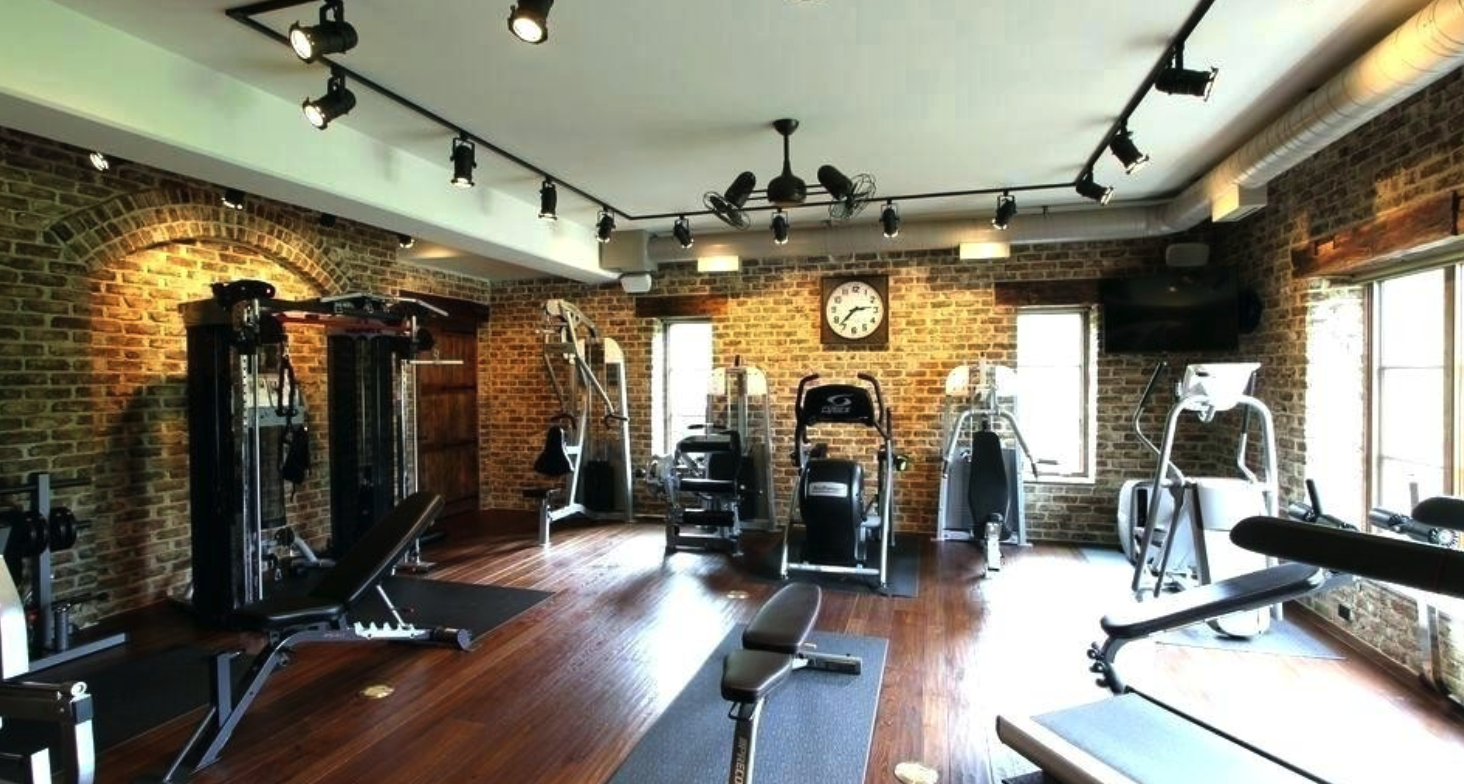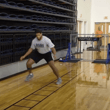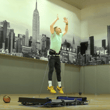Whether you’re remodeling your old office into an at-home gym or you're a coach outfitting your athletic performance facility for the right sports training equipment, doing the research beforehand — and reading these tips — can help you pick out the perfect exercise equipment for you and to make sure they align with your goals.
Before we dive headfirst into the features you should look for in the proper training equipment, let’s run through these quick need-to-know pieces of advice:
1. First and foremost, know that no matter how expensive or advanced your training equipment is, no matter how many bells and whistles — you still have to put in the effort on a consistent basis to reap the rewards.
2. Before you hop onto any machine, do your research or be guided on how to use it properly to avoid injury.
3. No matter your budget — there’s going to be equipment for you. To help you get the most bang for your buck, check customer reviews, ratings, and make your own comparisons. (The "Big Time Strength Podcast" hosted by Coach Gage Rosier is a great resource for strength and conditioning professionals to help maximize limited resources to provide a "big time" strength and conditioning experience. PS: Please check out Coach Rosier's EBook Crush Cancer)
4. Don’t be sold on empty promises. As I just mentioned, your equipment doesn’t have to be state-of-the-art, top-of-the-line products — so don’t buy the most expensive equipment out there. On that note — also don’t get swayed by crafty product descriptions and advertisements. If you see the words “quick, effortless, easy, fix”, dig a little deeper into the actual science of the matter.
Before You Buy
Don’t let a good deal and fancy advertising convince you to pull the trigger on a buy that easily. Before you dive into a new training method or piece, here are some last-minute pointers:
• Don’t wait until you buy — start working out now...today. Get into the healthy habit of training and exercising so when your equipment is finally set up, you won’t fully be relying on it to fulfill your workout habits.
• Test it out — whether you find a similar piece of equipment at the gym or at your friend’s house, make sure you know how it works or (especially if you have mobility issues) you’re able to use it, pain-free.
Picking Out the Perfect Equipment
Whether you’re making a decision between a VertiMax V8 Platform or the VertiMax Raptor— or any other product, for that matter — it can be a pretty tough purchasing decision.
But don’t let the daunting decision of choosing a product discourage you from getting fit.
Follow these tips to help you pick out the perfect equipment — for you:
Keep Your Goal in Mind
Although it might be difficult to establish a fitness or health goal — knowing what you want to get out of your equipment before you get it can be extremely helpful.
If you want to lose weight, a piece of cardio equipment — like a treadmill, stair climber or at-home stationary bike can all be pretty beneficial. If your goal is to gain muscle, you’ll want something like the free weights, Bowflex or an at-home stationary piece of equipment that helps focus on strength training.
If you want to work on agility and sport-related movement, VertiMax has everything you need to help boost your athletic performance.
Know What You Like
Never worked out before? Head to your local gym (preferably under the eye of a professional trainer) and help test out a few classes, modes of fitness, and workout equipment. Sometimes, the facility will give you a free day or week pass to get a feel.
If you already know your workout preference — or any physical limitations you might have— take those into consideration before buying. Although the toy might be new and shiny at first, getting something in the field you like will help you stay interested long after the honeymoon phase of the workout relationship is over.
Make Sure You Have The Space
Knowing what you like and having that ideal training equipment is — unfortunately — not the most important thing to consider. You also have to be able to truly envision where you want the gym equipment and if it’s able to find a place in your home.
To do this properly, take a look at the measurements of the equipment and compare it to the ideal space you want your new equipment. Of course, you might have to reconsider the plan if you find that it won’t fit — but it’s great to know this before you invest. If you’re buying online, it doesn’t hurt to double-check on the measurements with the manufacturer. (Here's some great insight from VertiMax creator, Mike Wehrell on his strategy of setting up his home gym for him and his family)
If you already have a space for an indoor, at-home gym in mind, you definitely want to think about how to best effectively use the space.
If you’re planning on owning your own gym, you should get a professional to help you with your layout. From locker rooms to offices, from lobbies or communal areas to bathrooms, there are so many “other” or “alternative” uses for your space that go beyond just the cardio and strength equipment — up to 40 percent, actually!
So, that means if you’re making a public gym (or a really large private one), you’ll most likely be using 60 percent of that space for training equipment. Keeping this in mind when stocking up on various machines, etc, can help you plan out your space best.
If you have your own gym, of course, this leaves you up to more freedom and the use of more space. However, you’ll definitely want to look at a few online tools or people to help assist you with planning to best utilize the spatial dimensions you have. If that’s lined up with the sizes of your gym equipment and machines, then that’s optimal!
Stay Within Your Budget
Dishing out your savings for training equipment is not truly being fiscally responsible. No matter how cheap you have to go, there are ideal equipment pieces within your price range. Have a number in mind before you go shopping to help you avoid the temptation of irresponsibly raising your budget. If you’re going to be spending more than you think, try to compare that to a gym membership to help see if it’s even worth it.
Don't forget to ask about 0% financing as well. At VertiMax, we have done this for many years and have given people the opportunity to invest in their goals now versus holding off for the future.
Check Out The Warranty
The guarantee and warranty of a product are also very important pieces of information you need to know before you buy. If you’re going to be buying it secondhand, ask the seller about the passing of the guarantee and if it’s still valid.
Try Not to See It As a Startup
Especially if you’re a beginner to the whole training world — it might be a bit difficult to not see this first purchase as a stepping stone piece of equipment that you plan on upgrading later on. This will lead you to be sloppy with your purchase and the process behind it.
If you take on buying the right sports training equipment as a commitment, you’re more likely to make an adequate decision.
Unfortunately, a lot of people actually see their first gym equipment or set of equipment as a beginner, cheap option that will be later upgraded. However, approaching it with that sort of thinking will lead you to have less of a hook on it and make a failing decision (since you don’t put so much pressure on it).
Buying cheap equipment will not only most likely lead you to purchasing a low-quality product leading you to having a poor experience, it might even lead you to actually believe you hate working out (which is crazy, since that is simply based on your experience with the product). On a side note, definitely try out more than one thing before giving up “working out” for life.
Cheap equipment designed with low-quality parts can always lead to aches and pains from poorly-made suspension systems. This can decrease your experience and can lead you to believe that you truly don’t like working out (or even cause you pain)! The bottom line...Do things once and do them right!
Be Realistic
If you purchase equipment thinking that you’re going to use it a couple of times and automatically look like a fitness model, that’s most likely not the case.
Knowing some realistic expectations for your fitness equipment experience ahead of time can help make the entire experience much more enjoyable.
As I mentioned before, if you know what you like — for example, working out or moving simply while watching TV — that can help you be more realistic about your machine choice (for example, a treadmill instead of an outdoor bike).
You should also know something that suits your body, in accordance with not only your preference but possibly physical limitations or injuries!
There’s something made out there for everyone — so don’t feel discouraged if you can’t choose a treadmill because you have easy-to-aggravate joints! Ask around and do your research on what machines work best for your body.
That goes along with not only being realistic, but also being honest with yourself about what you can and cannot do! Aim high, of course — but setting unrealistic expectations, can decrease your experience and demotivate you from trying again.
Buy OR Lease
You also have the options between buying your next piece of training equipment—committing to it wholeheartedly and investing in the equipment—or leasing it, which means that you can cut your losses if you don’t want or need it anymore, as well as not being as much as a financial burden.
The decision between buying or leasing cannot be boiled down to just one thing. You have to take into consideration not only your budget but also what you want in the long run.
Can’t afford any financial obligations? Well, leasing might be best since you can’t commit.
If you’re not good at paying things on time and just want to get it over with? Buying might be best for you.
Don’t want to have to worry about maintenance or repairs? Leasing from a reputable company can be your best bet.
Want all the luxury of buying but don’t have the capital? Well, secondhand options are also a great choice — just make sure you can try it out first and do a bit of research on the seller.
Brand
Although you might not think it really makes a difference, going for a brand name training equipment that has the reputation to back up their claims (like VertiMax) might be in your best interest.
You might think that brand names are only bought by extremely wealthy people. However, brands usually cater to a range of options and abilities — which means they can cater to you as a customer. You don’t have to choose the top of the line from the brand’s collection but buying the outdated equipment that still has the brand name can actually be a better investment than buying brand new, current-year pieces from a less reputable company.
Especially if you’re planning on selling the equipment later on down the road, you’re more likely to find interest if there’s a brand name attached to it. You’ll also be investing in a possible guarantee, warranty, and quality experience.
Accessories
Not only do you have to worry about if you have enough space to fit your brand new training equipment, you also want to make sure that you check out any extra accessories you may need.
Especially if you’re buying and not leasing, you’ll be responsible for spare parts or accessories that come along with the equipment that you may need for certain exercises.
It’s A Process...
Whether you’re thinking about buying the perfect training equipment for your fitness goals (and home area) or if you’re starting with the first step on your fitness journey, know that this sort of thing doesn’t happen overnight.
When you make an investment in sports equipment, you’re making an investment in your health. Take your time and make the right choice.
When you’re starting off on a journey to better health, be kind to you and your body. Don’t think powerful and extreme change will happen overnight.
What do you first think about when looking to add equipment to your gym? Would love to get your thoughts!
Trust the process and happy hunting!






















